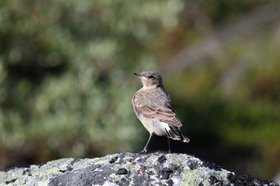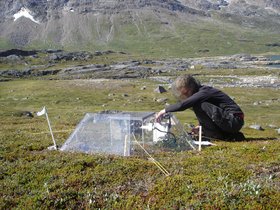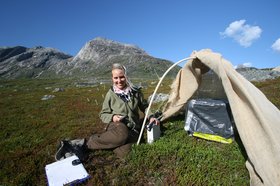About Nuuk Basic
Nuuk Basic is a climate change effects monitoring programme with its study area in low arctic West Greenland near Nuuk, the Capital of Greenland. The programme studies the effect of climate variability and change in marine and terrestrial ecosystems. The terrestrial study area is located in Kobbefjord (64°07’N / 51°21'W), approximately 20 km from Nuuk, the Capital of Greenland, while the marine part is focused in Nuup Kangerlua (Godthåbsfjord). In terms of scientific concept, Nuuk Basic copies the investigations carried through by its older counterpart monitoring programme, Zackenberg Basic, at Zackenberg Research Station in Northeast Greenland.
Zackenberg Basic in high arctic Northeast Greenland was established in 1995, and has since been the most comprehensive, cross-disciplinary ecosystem monitoring programme in the polar regions (Arctic and Antarctic). The programme is now called the Greenland Ecosystem Monitoring Programme and has developed from a comprehensive climate change and ecosystem monitoring programme at a single site in the National Park of North-East Greenland to also include two almost equally comprehensive programmes in West Greenland; Nuuk and Disko. Nuuk Basic was established in 2007 and fully implemented in 2008.
The Nuuk Basic monitoring programme focuses on providing long time series of data on the dynamics of a low arctic ecosystem. Focus is on climate change effects and feedbacks in both the marine and the terrestrial compartments of the ecosystem.
It is the ambition that Nuuk Basic shall comprise the same components as Zackenberg and as such allow for comparative studies of ecosystem dynamics in relation to climate variability and change in respectively a high arctic and low arctic setting. The inclusion of a low arctic programme makes it possible to study and document climate impacts and their effects in the arctic on a broader basis. The scientific concept for Nuuk Basic is in accordance with the recommendations of AMAP’s Climate Change Effects Monitoring Programme and designed as a follow up on the recommendations given in Arctic Climate Impact Assessment.
Nuuk Basic consists of five sub-programmes, involving several research institutions:
- ClimateBasis, which studies the climate and hydrology in the study area. The sub-programme is operated by Asiaq - Greenland Survey.
- GeoBasis, which studies the physical landscape processes including a number of feed-backs to climate change in the study area. The sub-programme is operated by Department of Geosciences and Natural Resource Management, University of Copenhagen in cooperation with Asiaq - Greenland Survey.
- BioBasis, which studies the biological processes in the study area. The sub-programme is operated by Department of Bioscience, Aarhus Aarhus in cooperation with Greenland Institute of Natural Resources.
- MarineBasis, which studies the biotic and abiotic processes in the marine compartment of the study area. The sub-programme is operated by Greenland Institute of Natural Resources, Nuuk.
- GlacioBasis, which studies the response to climate of Greenland’s glaciers and ice caps independent from the ice sheet.
Coordination: The scientific components of the GEM programme are coordinated by the secretariat at Department of Bioscience at Aarhus University.
Funding: The programme is funded by DANCEA (Danish Cooperation for Environment in the Arctic) through the Danish Ministry of Climate, Energy and Utilities and the Danish Environmental Protection Agency, and by the Government of Greenland. The establishment of the programme has been generously supported by Aage V. Jensen Charity Foundation.


